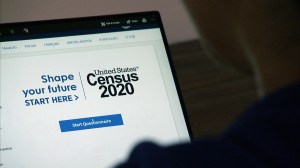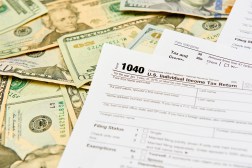Census Bureau launches surveys, data hub to track coronavirus impacts

The Census Bureau plans to fill holes in the government’s understanding of the coronavirus’ social and economic impacts with two new surveys and an interactive data hub.
An experimental Household Pulse Survey, released Thursday, asks individuals about employment status, food security, physical and mental health, access to health care, and educational disruption.
A second Small Business Pulse Survey inquires about closings, employment changes, supply chain disruptions, use of federal assistance programs, and operational expectations.
“The current pandemic highlights the need for much faster reporting and much faster data collection,” Nick Hart, CEO of the Data Coalition, told FedScoop earlier this month. “And it needs to be done at an incredible scale, where we get estimates for every state and large metropolitan areas.”
The federal government can operate at a scope and scale the private sector can’t for surveys of this type, but it can take a long time to get new surveys off the ground, Hart added.
That’s why the Data Foundation launched a privately funded COVID Impact Survey in early April to examine the impacts of the pandemic at a subnational level. The questionnaire asks households about coronavirus symptoms, employment conditions and anxiety levels.
The Census Bureau’s daily surveys function similarly and will reach about 100,000 businesses, with between one and 499 employees, weekly for nine weeks.
Both surveys will produce statistics at the state level and for the 15 largest metropolitan areas, though it will take two weeks for the first data release — which will be weekly thereafter. Question wording and weighting is expected to change over time.
The U.S. Department of Agriculture’s Economic Research Service, Bureau of Labor Statistics, National Center for Health Statistics, National Center for Education Statistics, and Department of Housing and Urban Development all helped with the household questionnaire.
The data hub
On Thursday, the Census Bureau also unveiled the beta version of its COVID-19 interactive data hub, compiling information from the American Community Survey and County Business Pattern program to assist pandemic-related decision making.
American Community Survey data is sociodemographic and can be used to look at the at-risk population age 65 and over, who’s insured and how, poverty, and languages spoken.
County Business Pattern data can inform recovery, allowing county officials to see, for instance, the number of employees in a particular industry in a county.
“The ability for states, localities and small businesses — as we’re trying to open the economy back up — to understand the at-risk population, the impacted industries across the different states and counties is important,” said Patty Mims, director of global national government at Esri, which helped the develop the hub and its maps.
Esri is in discussions with the bureau to publish data from the new pulse surveys in the hub in May, as well as Business Formation Statistics. Two more releases of additional American Community Survey and County Business Pattern variables are already planned, said Don Hong, program manager for Esri.
The Census Bureau is also working with other agencies like the Federal Emergency Management Agency and the Department of Health and Human Services to share the data in its hub.
Since the pandemic began, the government has relied on historic data gathering efforts modified for COVID-19, as well as new, rapidly evolving ones.
The National Center for Health Statistics’ National Vital Statistics System collects state-level data on death certificates, a “critical mechanism” for understanding mortality and causes of death nationwide, Hart said.
Meanwhile, the Centers for Disease Control and Prevention are collecting case-level data from positive coronavirus tests. And HHS created a system helping the White House track and mitigate the virus’ spread.
But little is known about the social and economic impacts of COVID-19.
“The data gaps are tremendous,” Hart said. “Today there’s not an infrastructure in place in the federal government for weekly, or even daily, reporting of some of the key indicators that help us understand what’s happening across the population.”






